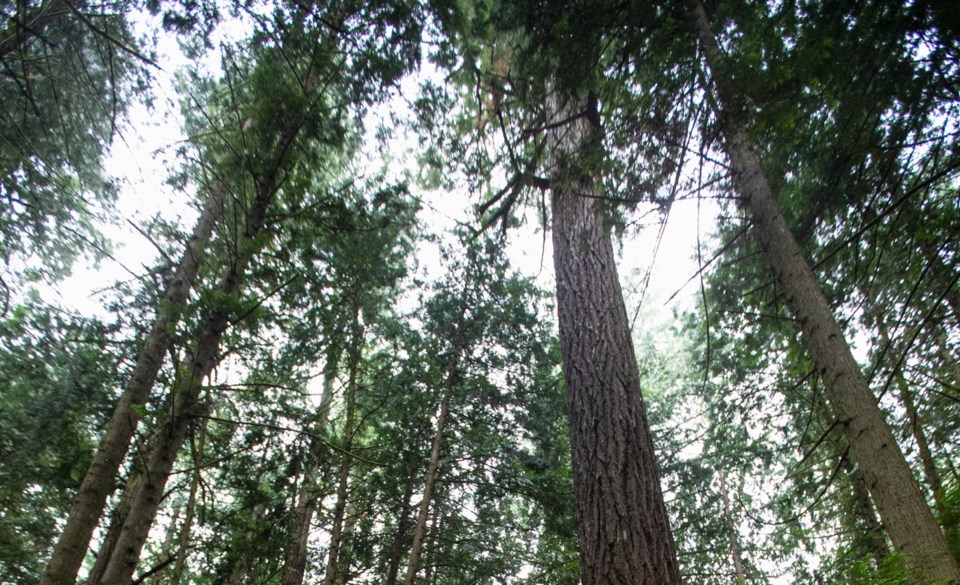A commentary. Gary Fiege is president of Public and Private Workers of Canada; Jens Wieting is senior forest and climate campaigner for the Sierra Club of B.C.
British Columbia’s old-growth forests, the values they hold for Indigenous peoples, and forestry-dependent communities are in crisis. Raw log exports remain at record high levels and mills are closing.
The climate crisis, insect outbreaks and massive forest fires are here to stay. But we’re still clearcutting the most endangered, resilient and carbon-rich forests at an alarming rate. Even more irresponsible, B.C. is exporting about three million cubic metres of old-growth per year as raw logs, accepting massive environmental losses for minimal economic benefits.
After decades of business as usual, time is running out for the B.C. government and industry to begin the transition to truly sustainable forestry. On the current path, we will not leave healthy forests or healthy communities for our children.
The amendment process for B.C.’s forestry law, currently underway, is a chance to change course. A new report prepared by the University of Victoria’s Environmental Law Centre identifies a key action the provincial government can take in doing so.
The report, Applying Solutions from the Great Bear Rainforest Agreements to Vancouver Island, the South Coast, and Beyond, recommends implementing the minimum level of local protection that is used in the Great Bear Rainforest — 30 per cent of the original old-growth ecosystems — in all parts of the province.
This percentage has been identified by experts as the critical limit to avert the risk of losing plants and animal species that depend on intact old-growth forests.
We welcome this recommendation and believe this minimum limit should be applied everywhere. The Great Bear Rainforest is considered the only major B.C. region with a land use framework that seeks to maintain ecological integrity as the basis for human well-being. This model was a collaborative effort by the B.C. government, First Nations governments, industry and environmental organizations.
In contrast, on Vancouver Island, only about a fifth of the original productive old-growth with relatively big trees hasn’t been logged. Of those ancient forests with the biggest trees, less than 10 per cent of the old-growth is left and an even smaller fraction is protected.
The NDP’s 2017 election platform included a commitment to act for old-growth, promising to take “an evidence-based scientific approach and use the ecosystem-based management of the Great Bear Rainforest as a model.” Implementing the minimum level of protection we see in the Great Bear in other parts of the province is a good place to start in keeping this election promise.
In addition, support for community well-being and a diverse economy-including long-term forestry jobs?-need to be part of the process of modernizing regional land use plans with Indigenous Nations on a government-to-government basis. Truly protecting the web of life will also require new protected areas and allowing some younger forests to grow old again.
These solutions are needed for both public and private lands and must respect Indigenous rights and jurisdiction. The B.C. government can partner with the federal government to support First Nations in the Clayoquot Sound region who are seeking new Indigenous protected area designations.
To encourage good long-term forestry jobs, B.C.’s forestry law reforms should include an immediate ban on all exports of raw logs from old-growth forests and higher taxes on log exports from second-growth forests to encourage investment in domestic mills. We also need support for more value-added forest manufacturing and jobs in rural and Indigenous communities.
The good news is that it’s not too late to save what remains of B.C.’s ancient forests, their cultural values and benefits for clean water, pure air and a stable climate. We can protect the environment and have jobs for rural British Columbians if we claw back the wood fibre keeping people employed in foreign jurisdictions.
We can still make the decision to transition to truly sustainable forest management before all is lost for the web of life. Creating more jobs with less damage per cubic metre of wood deserves our full support. We can have wood products and capture more carbon in our forests than is lost as a result of harvesting.
Amendments to provincial forestry regulations in 2020 offer a generational opportunity to apply a key element of the Great Bear Rainforest solution across the province.
We hope for future generations that the B.C. government will take it.



